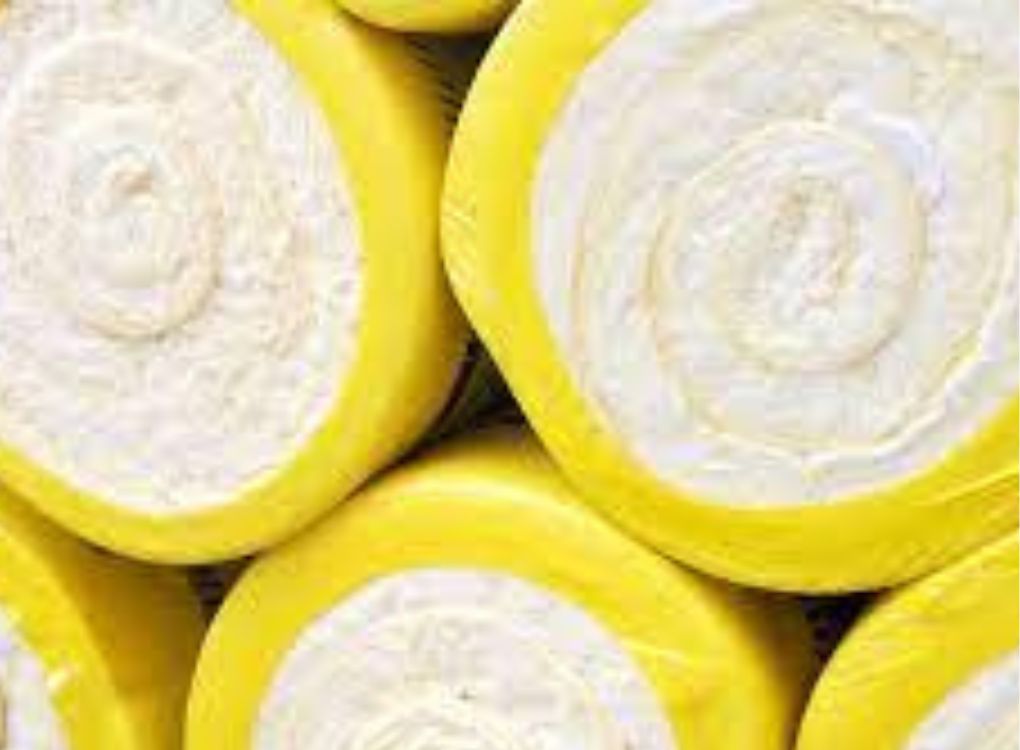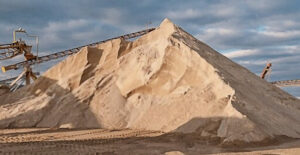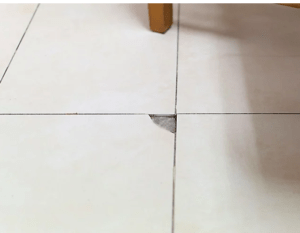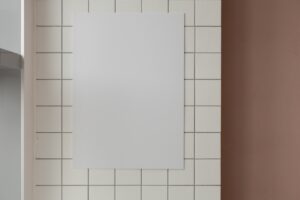Insulation is a critical component of any building structure because it plays a crucial role in regulating the internal temperature and reducing energy costs. Therefore, it is essential to understand the different types of insulation available and their benefits to ensure that the building is well protected and energy efficient.
Proper insulation helps to maintain the heat inside during the colder months and prevents it from escaping during the summer, making it an essential part of any construction project.
Without adequate insulation, buildings are susceptible to drafts, moisture, and other issues that can affect their structural integrity over time.
The purpose of the post is to provide a comprehensive overview of the most common types of insulation used in construction projects. Each type of insulation has unique characteristics and benefits from fiberglass and spray foam, cellulose, and rigid foam. Understanding the differences between them can help choose the right type of insulation for the building and maximize its energy efficiency. So, let’s dive in and explore the different types of insulation in more detail.
Different Types of Insulation Materials.
Fiberglass Insulation
This type of insulation is made from fine strands of glass fibers. It is commonly used in residential and commercial buildings as it is affordable, easy to install, and widely available. The fibers are woven together to create a material that is fluffy and resembles cotton candy.
Fiberglass insulation is effective in reducing heat transfer and sound transmission, making it a popular choice for insulating walls, ceilings, and floors, and has a good R-value overall, even if it is not the best.
Its popularity means that it is available in a wide range of sizes with or without paper facing. It is a somewhat green material, with 20-30% recycled content. It is lightweight and easy to install in a wide range of circumstances, often with only a tack nailer.
These can be classified into three types:
- Blown-in. Using pneumatic equipment to blow insulation into wall cavities or an attic ensures the greatest possible coverage. It may also be applied to already-installed insulation. The R-value of blown-in fiberglass ranges from 2.2 to 2.7 per inch.
- Batts. During construction, fiberglass batts and rolls are ideal for securing frameworks between floors, walls, attics, and ceilings. These materials have an R-value of up to 4.3 per inch and are denser than the blown-in insulation.
- Rolls. They work well for floors and attics because they may be precut to fit between the studs and joists. To serve as a moisture barrier, a face can also be added to the outside of the material. They provide an R-value of up to 4.3 per inch, similar to that of batts.
Advantages of fiberglass insulation
Fiberglass insulation is a popular choice in residential and commercial buildings. The advantages of using fiberglass insulation are as follows:
- Cost-effective: Fiberglass insulation is one of the most affordable insulation materials available in the market. It is readily available and easy to install, making it a popular choice for contractors and homeowners.
- Thermal insulation: Fiberglass is an excellent thermal insulator. This helps to maintain the heat inside during the winter months and prevents heat from entering during the summer months.
- Acoustic insulation: Fiberglass insulation is an excellent acoustic insulator. It helps reduce noise levels by absorbing sound waves, making it a popular choice for walls and ceilings.
- Fire-resistant: Fiberglass insulation is non-combustible and fire-resistant. This can help slow down the spread of fire in a building and provide more time for people to evacuate.
- Moisture-resistant: Fiberglass insulation is resistant to moisture and does not absorb water. This makes it an ideal choice for use in areas prone to moisture, such as basements, crawl spaces, and bathrooms.
- Environmentally friendly: Fiberglass insulation is made from natural materials such as sand and recycled glass. It is also 100% recyclable, making it an environmentally friendly insulation material.
- Long-lasting: Fiberglass insulation is durable and long-lasting. It does not settle or shrink over time, ensuring that it maintains its insulating properties for several years.
Overall, fiberglass is a versatile and cost-effective insulation material that provides excellent thermal and acoustic insulation, is fire- and moisture-resistant, and is environmentally friendly.
Disadvantages of fiberglass insulation
Although there are many advantages to using fiberglass insulation, there are also some potential disadvantages to consider. Some of the disadvantages of fiberglass insulation are as follows:
- Skin and respiratory irritation: This types of insulation can cause skin and respiratory irritation if the fibers are inhaled or come in contact with the skin. This can be an issue during installation or if the insulation is disturbed, leading to the release of fibers into the air.
- Requires protective gear: Due to the potential for skin and respiratory irritation, fiberglass insulation installation requires the use of protective gear, such as gloves, goggles, and respiratory masks. This adds an additional layer of cost and complexity to the installation process.
- Compaction over time: Over time, fiberglass insulation can be compressed, which reduces its insulating properties. This can occur due to settling, moisture, or other factors.
- Ineffective against air infiltration: Fiberglass insulation is not effective at preventing air infiltration, which can lead to energy loss and reduced energy efficiency.
- Limited moisture resistance: Although fiberglass insulation is resistant to moisture, it is not completely waterproof. If it becomes wet, it can lose its insulating properties and develop a mold or mildew.
- Limited effectiveness for soundproofing: While fiberglass insulation provides some acoustic insulation, it may not be as effective as other materials, such as mineral wool or spray foam insulation.
Cellulose Insulation
Cellulose insulation is made from recycled paper and other natural fibers, such as cotton and wool. It is treated with fire retardants and insect repellents to increase its durability and lifespan. The insulation is blown into walls, attics, and other spaces using special equipment, filling every nook and cranny to create a tight seal.
This type of insulation is known for its high R-value and thermal resistance, making it an effective option for energy-efficient homes. Additionally, cellulose insulation is resistant to mold, mildew, and pests, making it a popular choice for homeowners concerned with indoor.
In terms of thickness, cellulose has an R-value ranging from 3.2 to 3.8 per inch. The reason for this range is that the precise R-value of cellulose per inch can differ slightly depending on the size, shape, and construction of the building being insulated, the manufacturing processes used by the cellulose manufacturer, and typical weather conditions in the area.
Advantages of cellulose insulation
Cellulose insulation is an eco-friendly and cost-effective option to insulate residential and commercial buildings. The advantages of using cellulose insulation are as follows:
- Environmentally friendly: Cellulose insulation is made from recycled materials, such as newspapers, and treated with non-toxic chemicals to make it fire-resistant and insect-repellent. Thus, it is an environment-friendly insulation option.
- Energy-efficient: Cellulose insulation is an excellent thermal insulator that helps to reduce energy consumption by maintaining the heat inside during the winter months and preventing heat from outside from entering during the summer months.
- Acoustic insulation: Cellulose insulation is also an excellent acoustic insulator. It helps reduce noise levels by absorbing sound waves, making it a popular choice for use in walls and ceilings.
- Fire-resistant: Cellulose insulation is treated with fire-retardant chemicals that make it highly resistant to fire. It can help slow down the spread of fire in a building and provide more time for people to evacuate.
- Moisture-resistant: Cellulose insulation is treated with borates, which makes it resistant to moisture and mold. It can help prevent moisture from entering the building, which can reduce the risk of mold growth and other moisture-related issues.
- Easy to install: Cellulose insulation can be blown or sprayed into place, making it easy to install in hard-to-reach areas such as attics and wall cavities. This can save time and money compared with other insulation materials that require more labor-intensive installation methods.
- Long-lasting: Cellulose insulation is durable and long-lasting. It does not settle or shrink over time, ensuring that it maintains its insulating properties for many years.
Disadvantages of cellulose insulation
The disadvantages of cellulose insulation are as follows:
- Initial cost: Cellulose insulation can be more expensive to install than other types of insulation such as fiberglass insulation. This can be a disadvantage for those with a tight budget.
- Settling: Although cellulose insulation is used to prevent settling, it can settle over time. This can reduce its effectiveness as an insulator, and may require additional insulation.
- Dust and allergens: Cellulose insulation is made from recycled newspaper, which contains dust and allergens that can be released into the air during installation. This can be a problem for people with allergies or respiratory issues.
- Moisture absorption: While cellulose insulation is treated as moisture-resistant, it can still absorb moisture if it becomes wet. This can reduce its effectiveness as an insulator and can lead to mold and mildew growth.
- Flammability: Although cellulose insulation is treated as fire-resistant, it is not completely fireproof. In the event of a fire, it can burn and release toxic fumes.
- Installation issues: Cellulose insulation is typically blown or sprayed in place, which can be a messy and time-consuming process. It requires specialized equipment and trained professionals for proper installation.
- Weight: Cellulose insulation is heavier than other insulation materials such as fiberglass insulation. This can make it more difficult to install, and can put extra weight on the structure of the building.
Spray Foam Insulation
Spray foam insulation is a type of insulation applied using a spray gun. It is composed of two chemicals that are mixed together as they are sprayed onto the surface. The chemicals react with each other and expand to fill all gaps and cracks on the surface, creating a seamless layer of insulation.
This type of insulation is known for its high R-value, which is a measure of its ability to resist heat flows. It is also known for its ability to create an air barrier, which can help prevent drafts and improve the energy efficiency.
The R-value of the spray foam insulation can differ depending on the product, manufacturer, and other factors.
Spray foam insulation with open cells is R-3.6 to R-3.9 per inch. This R-value is typical of a spray foam with open cells.
Spray foam insulation with closed cells is R-6 to R-7 per inch.
You might be wondering why there is a difference in the per inch R-Value of open cell and closed cell spray foam because not all spray foams are created equal.
The type of foam, its age, and how well it resists moisture are factors that have an impact on the R-value of spray foam.
Even the process of creating foam insulation affects the R-value. Since open cell is a lighter material, it has a lower R-Value than closed cell, which is thicker and denser. This is because the denser composition of closed-cell spray foam makes it more difficult for heat to pass through.
Advantages of spray foam insulation
Spray foam insulation is a popular insulation material with several advantages over other types of insulation. The advantages of using spray foam insulation are as follows:
- Energy efficiency: Spray foam insulation is an excellent thermal insulator that helps to reduce energy consumption and lower heating and cooling costs. It creates an airtight seal that prevents air leakage and reduces the loss of conditioned air.
- High R-value: Spray foam insulation has a higher R-value than other insulation materials such as fiberglass or cellulose insulation. This means that it provides better insulation per inch of thickness, which can save space and allow thinner walls.
- Moisture barrier: Spray foam insulation is an effective moisture barrier that prevents mold and mildew growth. It can also help prevent water damage and protect the structures of buildings.
- Sound insulation: Spray foam insulation is excellent. It helps reduce noise levels by absorbing sound waves, making it a popular choice for use in walls and ceilings.
- Long-lasting: Spray foam insulation is durable and long-lasting. It does not settle or shrink over time, ensuring that it maintains its insulating properties for many years.
- Versatility: Spray foam insulation can be used in various applications, including walls, roofs, attics, and crawl spaces. It can also be used to fill gaps and cracks, thus making it a versatile insulation material.
- Eco-friendly: Some spray foam insulation products are made from renewable resources such as soy and are free of harmful chemicals. This makes them an eco-friendly insulation option.
Disadvantages of spray foam insulation
Although spray-foam insulation has several advantages, there are some potential disadvantages to consider. Here are some of the disadvantages of using spray foam insulation:1
- Initial cost: Spray foam insulation can be more expensive to install than other types of insulation such as fiberglass insulation. This can be a disadvantage for those who are on a tight budget.
- Professional installation: Spray foam insulation requires specialized equipment and trained professionals for proper installation. This can increase the installation cost and make it more difficult to find qualified installers in some areas.
- Health risks: Some spray-foam insulation products contain harmful chemicals that can be released into the air during installation. This can be a health risk for those with respiratory issues or allergies. Proper safety precautions, such as wearing protective gear and adequate ventilation, are necessary during the installation.
- Set time: Spray foam insulation requires time to set and cure after installation. This can delay construction or renovation projects and may require additional time for the space to become unusable.
- Difficult to remove: Once the spray foam insulation is installed, it is difficult to remove or modify it. This can be a disadvantage if changes are made to the building in the future.
- Potential for shrinkage: Some types of spray foam insulation can shrink over time, thereby reducing their effectiveness as insulators. This could lead to air leakage and increased energy consumption.
- Flammability: Spray foam insulation is flammable and can release toxic fumes if it catches fire. Therefore, it must be treated with flame retardants to reduce the risk of fire.
Read Also: Cavity Walls: Purpose & Construction Of Cavity Wall
Mineral Wool Insulation
Mineral wool insulation is made from natural rock or mineral fibers and is designed to provide excellent thermal and acoustic insulation. Unlike spray-foam insulation, it does not shrink over time and is not flammable, making it a safer and more reliable option for many buildings. Mineral wool insulation is resistant to moisture, mold, and pests, making it a popular choice for use in areas with high humidity or moisture levels.
Mineral wool is an effective insulation material in many ways. Compared to fiberglass, it has an R-value per inch that is approximately 22–37% higher. It is a greener product than fiberglass, which only contains 20–30% recycled material because it contains 70% recycled material.
Mineral wool has superior sound-dampening qualities because its density is more than three times that of fiberglass. It is simpler to install because stiffer batts do not flop over as frequently as fiberglass and do not need wires or staples to hold them in place. Because it repels water, it does not absorb moisture or support the growth of mold and mildew. In addition to being extremely fire-resistant, mineral wool can fire.
Advantages of mineral wool insulation
The benefits of using mineral wool insulation are as follows:
- High R-value: As mineral wool has a high R-value, it is a good insulator. It can help to keep buildings and homes comfortable while consuming less energy.
- Fire resistance: Mineral wool can withstand extremely high temperatures and is noncombustible. In the event of a fire, it can help prevent the spread of the fire and provide valuable time for residents to leave.
- Sound insulation: Mineral wool is an excellent choice for reducing noise pollution in homes and buildings because of its excellent sound absorption capabilities.
- Resistance to moisture: Mineral wool is moisture-resistant, which can help keep homes and buildings dry and stop the growth of mold and mildew.
- Environmental friendliness: Because mineral wool insulation is composed of natural and recycled materials, it is a green option for construction projects.
- Mineral wool insulation has a long lifespan and is resilient; therefore, it can be used for many years without losing its insulating properties.
- Simple installation: Mineral wool insulation can be cut to fit any space and is simple to install.
Disadvantages of mineral wool insulation
Although mineral wool insulation has many benefits, it has a few potential drawbacks to take into account. The following are some drawbacks of mineral wool insulation.
- Price: Compared to other insulation materials, such as fiberglass batts or blown-in cellulose, mineral wool insulation is typically more expensive.
- Itchy texture: The skin, eyes, and lungs can become itchy and irritated when exposed to mineral-wool insulation. When handling such clothing, it is crucial to wear protective clothing and a mask.
- Settling: Mineral wool insulation may settle over time, which may reduce its effectiveness and necessitate the addition of additional insulation.
- Weight: Mineral wool insulation is heavier than other insulation types, making handling and installation more challenging.
- Environmental issues: Even though mineral wool insulation is made from recycled and natural materials, the manufacturing process can be energy-intensive and produce greenhouse gas emissions.
- Not recommended in certain applications: Mineral wool insulation should not be used in basements or bathrooms because it can absorb moisture and lose its insulating qualities.
Reflective Insulation
Reflective insulation is a type of insulation that works by reflecting heat instead of absorbing it. This type of insulation is typically made up of a layer of aluminum foil or other reflective material, which is attached to a substrate, such as foam or fiberglass.
Reflective insulation is most commonly used in hot climates, where it can help reduce cooling costs by reflecting the sun’s rays away from a building. However, it is important to note that reflective insulation is not effective in all applications, and may not be the best choice for colder climates or areas with high humidity.
The R-value of the reflective insulation can change depending on the particular product and installation technique. Reflective insulation works by reflecting radiant heat instead of reducing the conductive heat transfer. Because of this, reflective insulation typically has a lower R-value than conventional insulation materials, such as fiberglass or cellulose.
Adding more layers or combining reflective insulation with other types of insulation can increase the R value of the material. Additionally, elements such as the orientation of the insulation, presence of air gaps, and ambient temperature and humidity levels can all affect the effectiveness of reflective insulation.
Advantages of reflective insulation
Some of the advantages of reflective insulation are as follows:
- Energy savings: Reflective insulation can help reduce energy costs by reflecting radiant heat away from the home or building, which can help keep it cooler in summer and warmer in winter. This can result in lower heating and cooling costs.
- Easy installation: Reflective insulation is relatively easy to install, especially compared to traditional insulation materials, such as fiberglass or cellulose. They can often be installed by homeowners or building owners themselves, without the need for specialized equipment or training.
- Lightweight: Reflective insulation is lightweight and easy to handle, which can make it easier to transport and install.
- Space-saving: Reflective insulation is thin and can be installed in tight spaces, which means that it can be a good option for retrofitting existing buildings or for applications where space is limited.
- Durable: Reflective insulation is generally durable and long-lasting, and is not susceptible to moisture damage or mold growth, similar to other types of insulation.
- Eco-friendliness: Reflective insulation is often made from recycled materials, and it is recyclable at the end of its life, which can make it an environmentally friendly option.
Disadvantages of reflective insulation
When deciding whether to use reflective insulation, one should keep in mind that although it has many benefits, it also has some drawbacks. The following are some drawbacks of reflective insulation:
- Lower R-value: Compared to more conventional insulation materials, such as fiberglass or cellulose, reflective insulation has a lower R-value. This implies that the rate of conductive heat transfer may not be slowed down effectively.
- Installation considerations: To effectively reflect heat away from the surface, reflective insulation must be installed with an air gap between it and the surface. The effectiveness of the insulation may be diminished if there is not a sufficient air gap.
- Limited effectiveness: Reflective insulation may not be as effective at blocking other types of heat transfer, such as conductive or convective heat transfer, because it is the most effective at reflecting radiant heat.
- Reflective insulation may not be appropriate for all applications. This is especially true when high R-values are required, and the installation environment is challenging, moist, or both.
- Price: Reflective insulation may not always be the most economical choice for all applications, because it can be more expensive per R-value than conventional insulation materials.
Although reflective insulation can be a good option in certain situations, it is important to carefully consider its disadvantages before deciding to use it.
Factors to consider when choosing insulation
The energy efficiency and comfort of a building or home can be significantly affected by the choice of insulation, which is a crucial choice. When selecting the insulation, we keep the following things in mind:
- R-Value : The R-value is a measurement of the insulation’s capacity to impede heat transfer. The ability of the insulation to reduce heat transfer increases with increasing R-value. The climate zone and particular application determine the appropriate R-value.
- Insulation type: Different insulation types are available, such as fiberglass, cellulose, spray foam, and reflective insulation. Each type has advantages and disadvantages, and the best option depends on several variables, including the installation environment, desired R-value, and budget.
- Installation technique: The way insulation is installed can affect its effectiveness. For example, batt insulation may be more suitable for new constructions, whereas blown-in insulation may be a better choice for retrofitting existing walls.
- Resistance to moisture: Different insulation types exhibit different levels of moisture resistance. It is crucial to select insulation that is suitable for the installation environment, because moisture-exposed insulation can lose its effectiveness and even develop a mold.
- Sustainability: Insulation of environmentally friendly materials, such as recycled products or renewable resources, can be sustainable.
- Price: The price of insulation varies depending on its type, R-value, and installation method. When making a decision, it is crucial to consider both the initial cost and the long-term energy savings.
Overall, selecting the proper insulation requires considering a number of variables and weighing the benefits and drawbacks of each option.
Conclusion
There are several options to consider when selecting the ideal insulation material for a construction project. The choice depends on particular needs and available funds. Each material has distinct properties.
Spray foam insulation offers an airtight seal and superior thermal insulation, whereas fiberglass insulation is a flexible and affordable alternative. Mineral wool insulation is ideal for high-temperature applications, whereas cellulose insulation is environment-friendly. Polyurethane insulation offers an airtight seal, superior thermal and acoustic insulation, and reflective insulation aids in lowering heat gain.
Understanding the various insulation materials and their functions will help you choose wisely for your construction project, resulting in a space that will be cozy and energy-efficient for many years.





